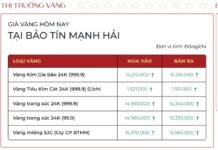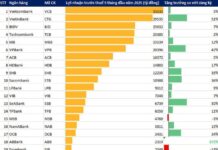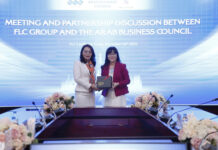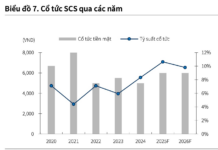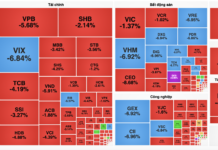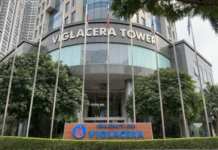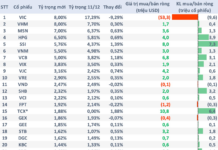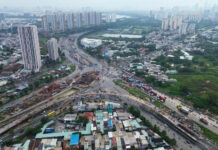HoREA expressed their appreciation for the Ho Chi Minh City Department of Natural Resources and Environment’s proposal to develop a “Draft Amended Land Price Table” according to Option 4. This option involves adjusting land prices as per the 2024 Land Law, ensuring alignment with local realities and taking into account compensation rates, resettlement land prices, and actual transfer prices from land registration and tax authorities.

The new land price table draft in Ho Chi Minh City proposes significant increases in prices for many roads to match actual transaction prices. (Illustration: Dai Viet)
However, HoREA noted that referring to it as “Option 4” might not be entirely accurate. In essence, this option reflects the content of Clause 1, Article 257 of the 2024 Land Law, which stipulates that, when necessary, the provincial People’s Committee shall decide to adjust the land price table according to the provisions of this Law to suit the local reality, and Ho Chi Minh City falls under this category.
Therefore, HoREA suggested using a calculation method for the amended land price table by taking the actual compensation prices for roads approved by the City People’s Committee as a standard and applying the comparison method to determine the land prices of adjacent roads within the same area or between areas in each district, including Thu Duc City.
This approach aims to ensure fairness for individuals and households who will pay land use fees. In other words, those paying land use fees from August 1 to December 31, 2025, will pay an amount equivalent to or, if higher, not significantly different from those who paid land use fees in the first seven months of 2024.
HoREA recommended employing a calculation method for the amended land price table with a wide range of variations, as implemented in District 3 (4.4-8.7 times), District 6 (4.6-11 times), District 7 (7.7-15.6 times), District 8 (4.3-18.3 times), District 11 (3.6-9.4 times), District 12 (2.6-33.4 times), Tan Binh District (6.8-12 times), Tan Phu District (7-16.9 times), Go Vap District (7-10.8 times), Binh Thanh District (5-12.8 times), and Binh Tan District (7.4-17 times).
Similarly, Thu Duc City (6.8-34.7 times), Hoc Mon District (3.6-50.7 times), Cu Chi District (9.7-31.7 times), Binh Chanh District (1.9-36 times), Nha Be District (7-22.3 times), and Can Gio District (7.8-22.9 times) will follow this calculation method.
“Implementing the calculation method for the amended land price table with a wide range of variations will ensure that land prices in the districts’ respective areas are more closely aligned with reality,” HoREA emphasized.
HoREA also suggested refraining from using a calculation method that involves multiplying the “Land Price Table 02” by a “coefficient” to determine all land prices uniformly, as seen in the draft amended land price tables of District 1, District 4, and District 5. They recommended re-evaluating these drafts.
Additionally, the association recommended against using a calculation method that involves multiplying the “Land Price Table 02” by a “coefficient” to determine land prices uniformly for groups of roads, as proposed in the draft amended land price table of District 10 and Phu Nhuan District. They suggested re-examining these drafts as well.
“Understanding the New Land Use Charges When Converting Agricultural Land to Residential: A Guide for the Community”
Under Clause 5, Article 116 of the 2013 Land Law, households and individuals who wish to convert agricultural land within residential areas, within the same land lot, or to convert non-agricultural land that is not for residential purposes into residential land, must ensure that it complies with the approved district-level land use planning.
The City of Ho Chi Minh will Adjust the Collection Rates in the New Land Price Table
The newly proposed land price schedule has increased prices by as much as 5 to 51 times compared to the previous schedule. However, the authorities will collaborate and report to the People’s Committee of Ho Chi Minh City, proposing that the government review and adjust the tax rates and collection amounts as necessary to ensure equitable financial obligations regarding land matters.






